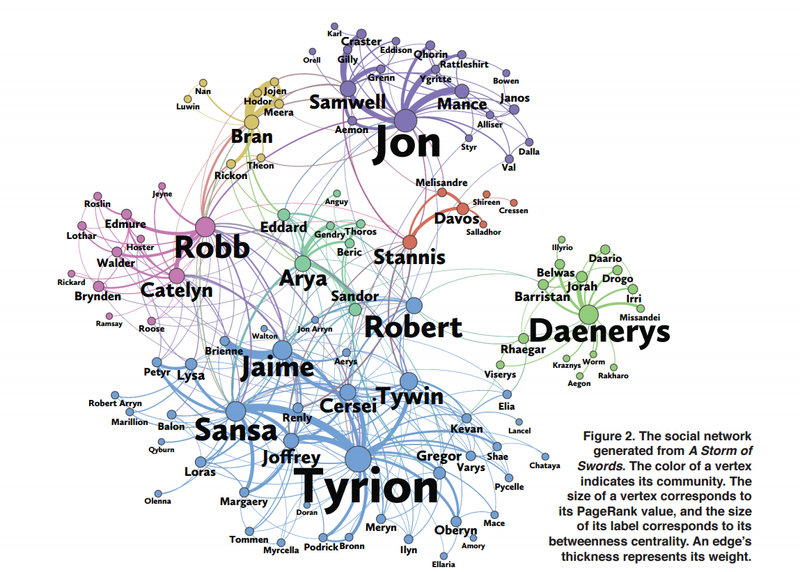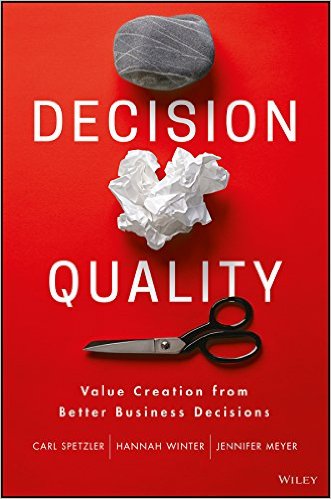
1. Edges, dragons, and imps.
Network analysis reveals that Tyrion is the true protagonist of Game of Thrones. Fans already knew, but it’s cool that the graph confirms it. This Math Horizons article is a nice introduction to graph theory: edges, betweeness, and other concepts.


2. Teach your team to make high-quality decisions. Few of us have the luxury of formally developing a decision-making methodology for ourselves and our teams. And business books about strategic decisions can seem out of touch. Here’s a notable exception: Decision Quality: Value Creation from Better Business Decisions by Spetzler, Winter, and Meyer.
The authors are well-known decision analysis experts. The key takeaways are practical ideas for teaching your team to assess decision quality, even for small decisions. Lead a valuable cultural shift by encouraging people to fully understand why it’s the decision process, not the outcome, that is under their control and should be judged. (Thanks to Eric McNulty.)
3. Analytics of 100,000 presentations.
Great project we hope to see more of. Big data analysis on 100,000 presentations looked at variables such as word choices, vocal cues, facial expressions, and gesture frequency. Then they drew conclusions about what makes a better speaker. Among the findings: Ums, ers, and other fillers aren’t harmful midsentence, but between points they are. Words like “challenging” can tune in the audience if spoken with a distinct rate and volume. Thanks to Bob Hayes (@bobehayes).
4. Evidence-based policy decisions.
Paul Cairney works in the field of evidence-based policy making. His new book is The Politics of Evidence-Based Policy Making, where he seeks a middle ground between naive advocates of evidence-based policy and cynics who believe policy makers will always use evidence selectively.
Posted by Tracy Allison Altman on 14-Apr-2016.








